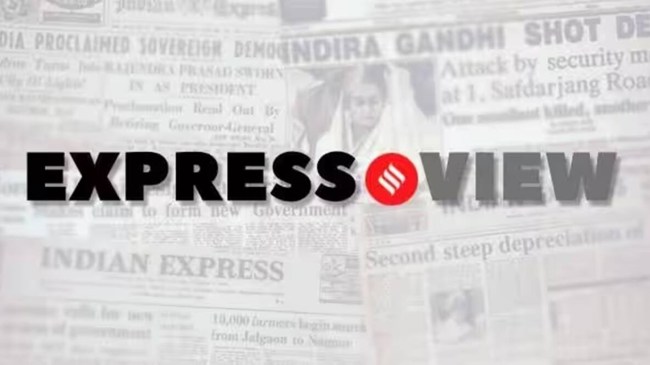Opinion Express View on PM Modi’s visit to Manipur: The challenge is to build bridges across historical faultlines
Weakening the conditions that have made ethnicity a divisive force requires sustained dialogue between the representatives of warring communities.
 The PM’s words need to translate to progress on the ground.
The PM’s words need to translate to progress on the ground. Eight hundred and sixty-four days since violence erupted and snowballed into an ethnic conflict, which has claimed more than 250 lives and displaced tens of thousands of the state’s residents, Prime Minister Narendra Modi visited Manipur on September 13. Although belated, the visit is a welcome step amid the deadlock between the Meiteis and the Kukis, especially since the PM repeatedly emphasised the peace imperative and talked of the need to address the aspirations of the state’s youth. His stops in Kuki-dominated Churachandpur and Meitei-dominated Imphal, to meet internally displaced persons and inaugurate infrastructure projects, were symbolically significant, signalling to both communities that the country’s highest executive authority has summoned all political capital to respond to their concerns. The major theme of PM Modi’s speeches was putting Manipur back on the developmental pathway — a journey that has been disrupted by cycles of inter-community friction. At Churachandpur, his first stop, and later in Imphal, the Prime Minister reassured the people of Manipur that his government was making “all efforts” to restore normalcy as he inaugurated highway, rail, and infotech projects worth thousands of crores. These initiatives are much-needed. The Centre must now ensure that they are implemented in a time-bound manner.
A more compelling task is to address Manipur’s historical faultlines and restore trust among the state’s communities. PM Modi described the strife as a grave injustice to “our ancestors and our future generations,” and stressed the need to build a “strong bridge between the people of the Hills and the Valley.” Even a cursory look at the demands of the Meiteis and Kuki-Zos reveals the complexity of this challenge. On Saturday, the Kuki-Zo Council submitted a memorandum, reiterating their longstanding demand for a “lasting political solution” through a “separate administration”. In contrast, the most influential Meitei civil society organisation, COCOMI, fiercely opposes any separate administration, denouncing it as the “ethnicisation” of citizenship and statehood. COCOMI has also pressed for a National Register of Citizens and the identification of “illegal immigrants” to correct what it perceives as a “demographic imbalance”. And looming in the background is the issue that triggered the conflict in the first place: The Meitei demand for Scheduled Tribe status and the fear in the hills that it threatens the land rights of the tribal people.
That the PM and the state governor were the only dignitaries on the stage at both Churachandpur and Imphal frames the immediate challenge for the Centre in Manipur. The dismissal of the deeply unpopular N Biren Singh in February was followed by President’s Rule, which has since been extended. At the same time, weakening the conditions that have made ethnicity a divisive force in the state’s society requires sustained dialogue between the representatives of the communities. The Centre will have to handhold Manipur on the long haul and enable the state to resume the political process that has been scarred by the ethnic conflict. PM Modi’s visit should be the harbinger of a healing process. In the coming weeks and months, the Centre will need to keep talking to all groups in Manipur to make sure they talk to each other. The PM’s words need to translate to progress on the ground.




